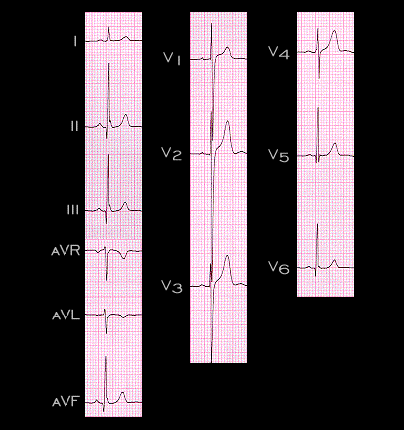
The ECG shown here is from a 19 year old male with a loud systolic murmur heard best in the 4th left intercostal space. The electrocardiogram, with the deep S waves in leads V2 and V3, is still within normal limits for a 19 year old male. The loud murmur reflected a high velocity of flow across a small ventricular septal defect. There was no ventricular hypertrophy and the pulmonary artery pressure was normal. This constellation of findings, namely a small VSD with a loud murmur and a normal ECG, is referred to as "Maladie de Roger" after the 19th century French pediatrician who first described it.
